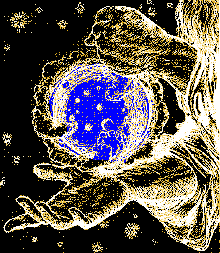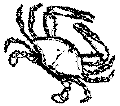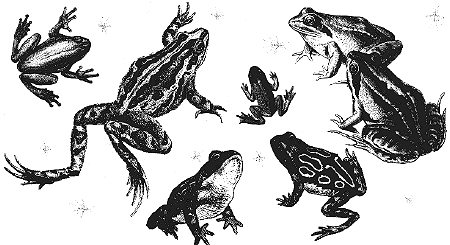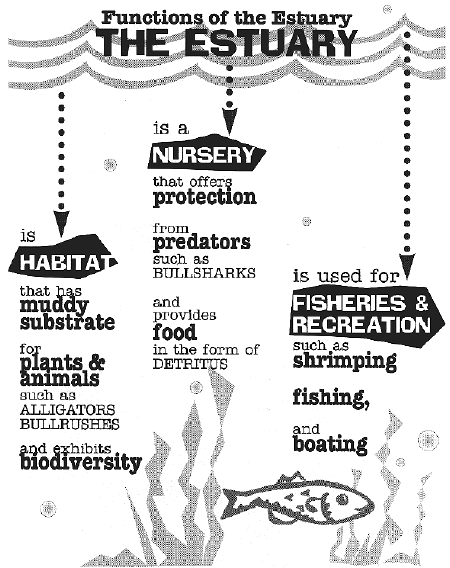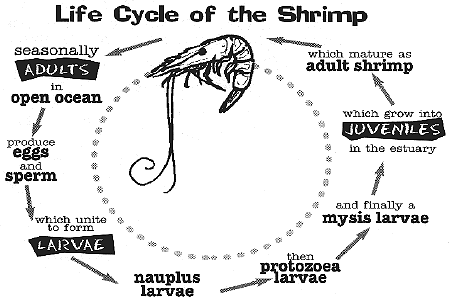
|
The Lake Pontchartrain Estuary
Lake Pontchartrain is a 630 square mile estuary which receives freshwater from six major sources:
- Tangipahoa River
- Tchefuncte River
- Tickfaw River
- Amite River
- Bogue Falaya River
- Lacombe Bayou
Salinity:
The Lake Pontchartrain estuary receives saltwater from the Gulf of Mexico, entering Lake Pontchartrain through the Rigolets and Chef Menteur Passes. A smaller lake, Lake Maurepas, is connected to Lake Pontchartrain at its western edge by Pass Manchac; its contribution of freshwater serves to dilute lake salinity.
Salinity in the estuary ranges from 0.5-15 ppt. The highest salinities are found near the Rigolets and Chef Menteur Passes as high salinity water is pushed from the passes into Lake Pontchartrain.
An additional source of high saline water is the Industrial Canal on the south shore of Lake Pontchartrain. This water is channeled through the Mississippi River Gulf Outlet and is largely responsible for changing freshwater habitat areas in the lower Mississippi River Delta to saltwater areas.
Freshwater:
The freshwater from six major sources measurably dilutes high saline waters; for example, salinities near the Tangipahoa River are 0 ppt.
Under certain flooding conditions in the Mississippi River, the Bonnet Carre Spillway is opened and provides additional freshwater to the estuary.
The quality of water entering the estuary from the rivers, bayou and spillway is of concern to those who use the estuary. This water quality may be contaminated by:
- Urban runoff: oil from city streets or untreated sewage;
- Agricultural wastes: manure from dairy feed lots;
- Chemical Pollution: toxins released into the river;
- Sediment: from poor soil conservation practices;
- Excess nutrients: fecal material and fertilizer from farms along the Mississippi;
- Litter or garbage: waste from careless boaters or picnicers.
Tidal Influence:
Tides in Lake Pontchartrain are produced by winds.
These tides are minimal, and the tidal range is three to ten inches under most conditions.
The winds also drive a counterclockwise current in Lake Pontchartrain, causing water to circulate in that pattern. This means that what gets into Lake Pontchartrain usually stays there!
Estuarine Wetlands:
Historically, the land surrounding the Lake Pontchartrain estuary contained acres
d acres of wetlands, (marshes, swamps and bottomland hardwood forests). This huge brackish-water (0.5-15 ppt salinity) estuary and its surrounding wetlands functioned as diverse habitat for freshwater and marine species.
Historically, the wetland areas acted as filters for water entering the lake from land drainage; the water in Lake Pontchartrain remained clean and useable.
Today many of the wetland areas have disappeared:
- Affecting water quality in Lake Pontchartrain and
- Producing loss of habitat for many species which surround the lake.HA
Habitat:
Although there are many habitats in the Pontchartrain Basin, we will focus on the surrounding wetlands and the lake bottom.
Wetlands:
The healthy vegetated wetlands surrounding the Lake provide protection and food for many estuarine animals such as:
- Mammals: raccoons, opossums, squirrels, deer;
- Reptiles and Amphibians: yellow-bellied water snakes, red-eared slider turtles;
- Birds: American Egrets, red-winged blackbirds, Little Blue Herons, American Bald Eagles;
- Invertebrates: blue crabs, crawfish, shrimp, oysters;
- Fish: juvenile menhaden (pogie), least killifish, speckled trout, red snapper.
Lake bottom or benthic substrate of Lake Pontchartrain:
The silty bottom of this large lake is habitat for many invertebrate animals; among them is the Rangia cuneata clam:
- Rangia was a favorite food of local Native American inhabitants.
- When purged of silt and fried in a batter, these clams are quite delicious!
- The shells of the dead clams were used to make roadbeds throughout the country. Economically the shells were valuable, and an industry which dredged up living and dead clam shells developed.
- Since shell dredging which increased lake turbidity was halted ten years ago, the turbidity in the lake is clearing. Al
ong the edges of the lake, where sandy bottom sediment is found, favorable conditions are supporting the growth of submerged aquatic vegetation. The vegetation is Vallisneria americana or turtle grass. It is important because:
- Submerged aquatic vegetation, or grass-like plants which grow under water, are returning with the decrease in turbidity.
- Submerged aquatics are home for many species, like blue crabs and juvenile fish species.
- Submerged aquatics provide oxygen and are a source of food for some species in Lake Pontchartrain.
- Submerged aquatics are part of a healthy ecosystem and indicate that Lake Pontchartrain is beginning its recovery from environmental problems.
|

